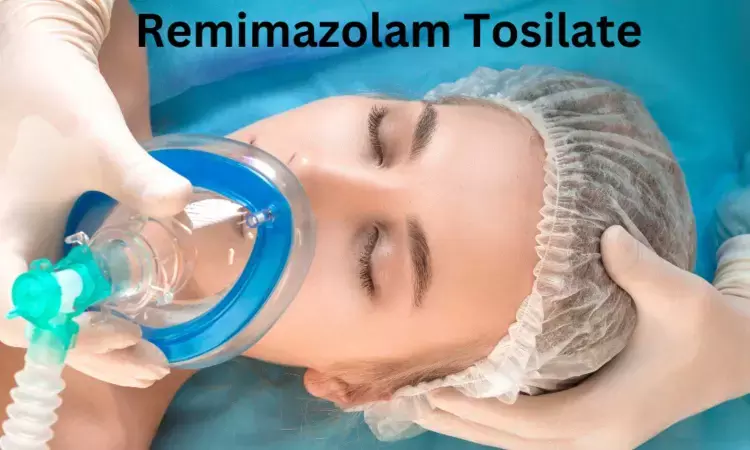- Home
- Medical news & Guidelines
- Anesthesiology
- Cardiology and CTVS
- Critical Care
- Dentistry
- Dermatology
- Diabetes and Endocrinology
- ENT
- Gastroenterology
- Medicine
- Nephrology
- Neurology
- Obstretics-Gynaecology
- Oncology
- Ophthalmology
- Orthopaedics
- Pediatrics-Neonatology
- Psychiatry
- Pulmonology
- Radiology
- Surgery
- Urology
- Laboratory Medicine
- Diet
- Nursing
- Paramedical
- Physiotherapy
- Health news
- Fact Check
- Bone Health Fact Check
- Brain Health Fact Check
- Cancer Related Fact Check
- Child Care Fact Check
- Dental and oral health fact check
- Diabetes and metabolic health fact check
- Diet and Nutrition Fact Check
- Eye and ENT Care Fact Check
- Fitness fact check
- Gut health fact check
- Heart health fact check
- Kidney health fact check
- Medical education fact check
- Men's health fact check
- Respiratory fact check
- Skin and hair care fact check
- Vaccine and Immunization fact check
- Women's health fact check
- AYUSH
- State News
- Andaman and Nicobar Islands
- Andhra Pradesh
- Arunachal Pradesh
- Assam
- Bihar
- Chandigarh
- Chattisgarh
- Dadra and Nagar Haveli
- Daman and Diu
- Delhi
- Goa
- Gujarat
- Haryana
- Himachal Pradesh
- Jammu & Kashmir
- Jharkhand
- Karnataka
- Kerala
- Ladakh
- Lakshadweep
- Madhya Pradesh
- Maharashtra
- Manipur
- Meghalaya
- Mizoram
- Nagaland
- Odisha
- Puducherry
- Punjab
- Rajasthan
- Sikkim
- Tamil Nadu
- Telangana
- Tripura
- Uttar Pradesh
- Uttrakhand
- West Bengal
- Medical Education
- Industry
Remimazolam tosilate ok for supportive sedation in elderly patients under intraspinal anesthesia

Insufficient depth of anesthesia during surgery is known to cause intraoperative pain, abnormal sympathetic innervation, and even intraoperative awareness; while excessive anesthesia, on the other hand, will directly inhibit patients’ cardiac and cerebrovascular functions, delay their recovery, and increase their risks of postoperative complications such as respiratory depression.
Recent study in BMC Anesthesiology reports about Remimazolam tosilate (RT) for injection is a new benzodiazepine used in sedation. Its clinical application, has few effective indicators for sedation depth monitoring and is much safe to use in elderly patients.
The Bispectral Index (BIS) and the Patient State Index (PSI) are commonly used measures to assess intraoperative sedation depth. However, model differences lead to different results, which in turn interferes with clinicians’ judgment on the depth of anesthesia. This current study aims to compare BIS and PSI in measuring the sensitivity and specificity of intraoperative RT and to explore the safety of RT for intraspinal anesthesia in elderly patients.
The study included 40 patients undergoing elective electro-prostatectomy with intraspinal anesthesia, who were monitored by BIS and PSI simultaneously during operation. Remimazolam tosylate 0.1 mg/kg was intravenously administered after the intraspinal anesthesia when patients were in a completely painless status. Then BIS, PSI, the Modified Observer’s Assessment of Alertness and Sedation (MOAA/S) scores and vital signs were observed and recorded per minute for 10 min. Pearson’s correlation analysis and linear regression model were used to compare BIS and PSI sedation scores.
The key findings of the study are
• According to Pearson’s correlation analysis, a significant (P < 0.01) correlation between BIS and PSI was found when used to monitor intraoperative sedation of RT (r = 0.796).
• Significant associations between BIS and MOAA/S (r = 0.568, P < 0.01), and between PSI and MOAA/S (r = 0.390, P < 0.01) were also found.
• The areas under the ROC curves of BIS and PSI were 0.801 ± 0.022 and 0.734 ± 0.026, respectively, suggesting that both measures may predict patients’ state of consciousness and BIS was more accurate than PSI.
• Vital signs remained stable throughout the study. No abnormal changes of clinical significance were found based on laboratory test results of liver and kidney function.
Researchers concluded that BIS and PSI are strongly associated for monitoring the sedation of RT intraoperatively. Both methods can accurately reflect sedation depth. According to correlation analyses with MOAA/S scale and ROC curves, BIS is more accurate than PSI during such intraoperative monitoring. In addition, RT can be safely used in elderly patients under intraspinal anesthesia for supportive sedation, with stable vital signs and sound kidney and liver safety profiles.
Reference: Zhao, Tym., Chen, D., Xu, Zx. et al. Comparison of bispectral index and patient state index as measures of sedation depth during surgeries using remimazolam tosilate. BMC Anesthesiol 23, 208 (2023). https://doi.org/10.1186/s12871-023-02172-3.
MSc. Neuroscience
Niveditha Subramani a MSc. Neuroscience (Faculty of Medicine) graduate from University of Madras, Chennai. Ambitious in Neuro research having worked in motor diseases and neuron apoptosis is interested in more of new upcoming research and their advancement in field of medicine. She has an engrossed skill towards writing and her roles at Medical dialogue include Sr. Content writer. Her news covers new discoveries and updates in field of medicine. She can be reached at editorial@medicaldialogues.in
Dr Kamal Kant Kohli-MBBS, DTCD- a chest specialist with more than 30 years of practice and a flair for writing clinical articles, Dr Kamal Kant Kohli joined Medical Dialogues as a Chief Editor of Medical News. Besides writing articles, as an editor, he proofreads and verifies all the medical content published on Medical Dialogues including those coming from journals, studies,medical conferences,guidelines etc. Email: drkohli@medicaldialogues.in. Contact no. 011-43720751


